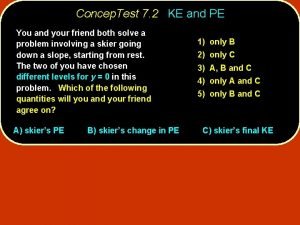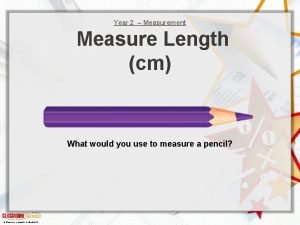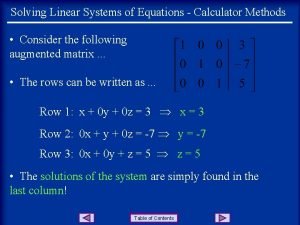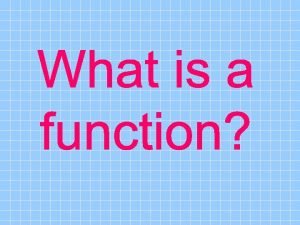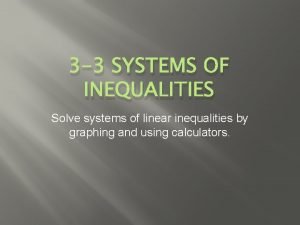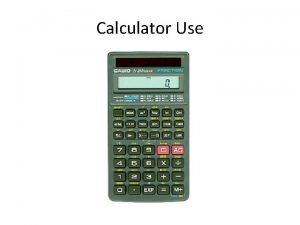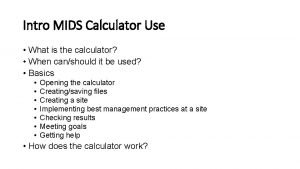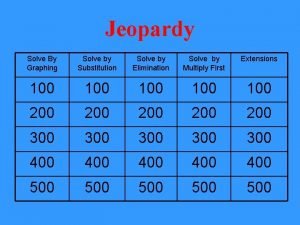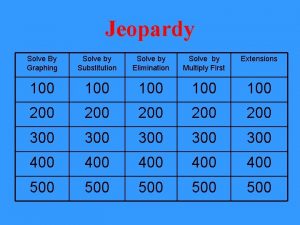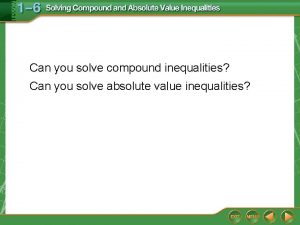How would you use your calculator to solve

















- Slides: 17


How would you use your calculator to solve 52? Input Press: 5 Output x 2 25 The number you entered is the input number (or x-value on a graph). The result is the output number (or yvalue on a graph). The x 2 key illustrates the idea of a function.

A function is a relation that gives a single output number for every valid input number. A relation is a rule that produces one or more output numbers for every valid input number. There are many ways to represent relations: Graph Equation Table of values A set of ordered pairs Mapping These are all ways of showing a relationship between two variables.

A function is a rule that gives a single output number for every valid input number. To help remember & understand the definition: Think of your input number, usually your x -coordinate, as a letter. Think of your output number, usually your y-coordinate, as a mailbox.

A function is a rule that gives a single output number for every valid input number. Input number Output number Can you have one letter going to two different mail boxes? Not a FUNCTION

A function is a rule that gives a single output number for every valid input number. Input number Output number Can you have two different letters going to one mail box?

Are these relations or functions? x 1 2 3 4 y 5 6 7 Function & Relation x 1 2 3 4 y 5 6 7 6

Are these relations or functions? x 1 y 5 6 2 7 Not a Function but a Relation x 1 2 1 1 y 5 6 7 6

Are these relations or functions? x y 1 5 2 6 3 8 11 Not a function But a relation x 1 2 2 3 y 5 6 11 8

In words: Double the number and add 3 As an equation: y = 2 x + 3 As a table of values: x y -2 -1 -1 1 0 3 1 5 These all represent the SAME function! As a set of ordered pairs: (-2, -1) (-1, 1) (0, 3) (1, 5) (2, 7) (3, 9)

Lesson 5. 2 (PART 2) Math 10 C

Functional Notation An equation that is a function may be expressed using functional notation. The notation f(x) (read “f of (x)”) represents the variable y.

Functional Notation Cont’d Example: y = 2 x + 6 can be written as f(x) = 2 x + 6. Given the equation y = 2 x + 6, evaluate when x = 3. y = 2(3) + 6 y = 12

Functional Notation Con’t For the function f(x) = 2 x + 6, the notation f(3) means that the variable x is replaced with the value of 3. f(x) = 2 x + 6 f(3) = 2(3) + 6 f(3) = 12

Evaluating Functions Given f(x) = 4 x + 8, find each: 1. f(2) = 4(2) + 8 = 16 2. f(a +1) = 4(a + 1) + 8 = 4 a + 4 + 8 = 4 a + 12 3. f( 4 a) = 4(-4 a) + 8 = -16 a+ 8

Evaluating More Functions If f(x) = 3 x 1, and g(x) = 5 x + 3, find each: 1. f(2) + g(3) = [3(2) -1] + [5(3) + 3] = 6 - 1 + 15 + 3 = 23 2. f(4) - g(-2) = [3(4) - 1] - [5(-2) + 3] = 11 - (-7) = 18 3. 3 f(1) + 2 g(2) = 3[3(1) - 1] + 2[5(2) + 3] = 6 + 26 = 32

5. 2 QUESTIONS: MUST BE DONE FOR MONDAY!
 Would prefer not to grammar
Would prefer not to grammar Would prefer
Would prefer 3 conditional interrogative
3 conditional interrogative How you use ict today and how you will use it tomorrow
How you use ict today and how you will use it tomorrow Each proportion write your answer in your notebook
Each proportion write your answer in your notebook Kinetic energy of spring
Kinetic energy of spring Pe=2ke
Pe=2ke Put your left foot in
Put your left foot in Do you love rain
Do you love rain What would you use to measure a pencil
What would you use to measure a pencil Applications of piecewise functions
Applications of piecewise functions How are guilt by association and coat tailing related
How are guilt by association and coat tailing related What reference source would you use to find the
What reference source would you use to find the How would you use arithmetic sequence in making decisions
How would you use arithmetic sequence in making decisions Solving linear equations calculator
Solving linear equations calculator Solve for x calculator
Solve for x calculator Solve systems of linear inequalities by graphing calculator
Solve systems of linear inequalities by graphing calculator Solve proportions calculator
Solve proportions calculator






